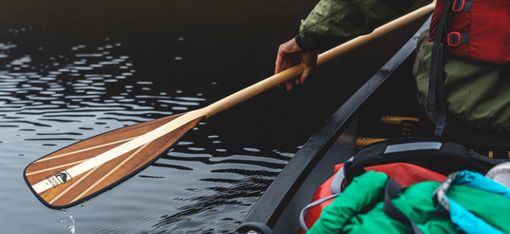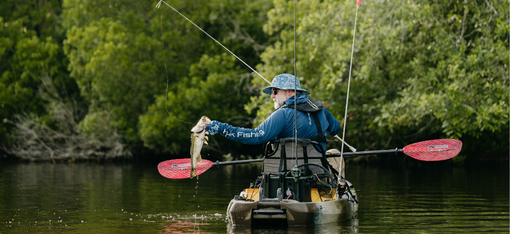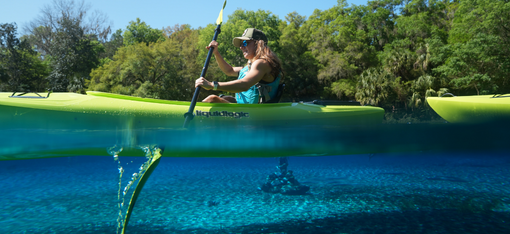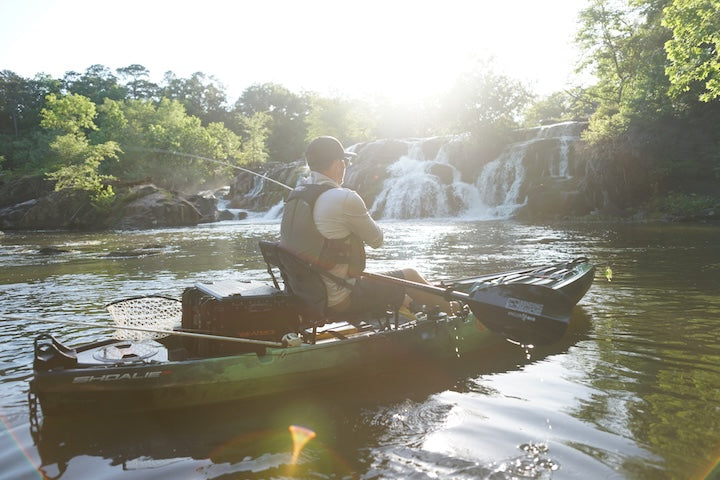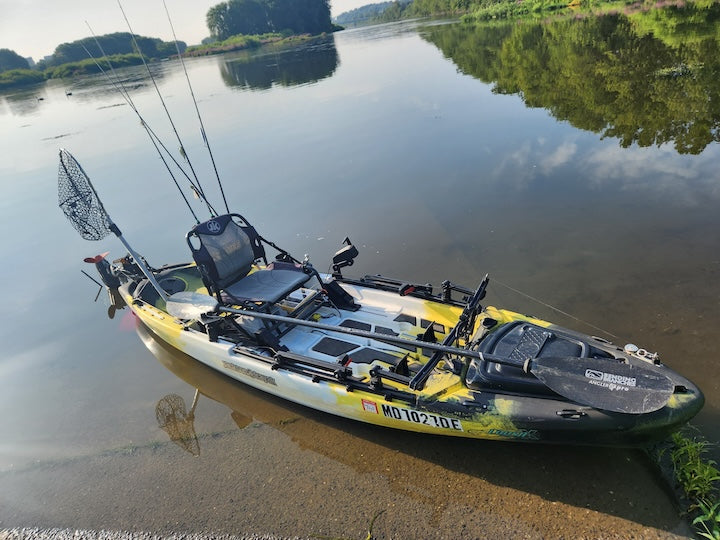Canoeing Gear Ideas for Older Adults
6-minute read
One of the best things about paddle sports like canoeing and kayaking is that they’re low-impact, healthy activities we can continue to do well into our older years.

(photo courtesy of Aaron Black-Schmidt)
Here are a few gear ideas that will make canoeing and kayaking easier as you get older. In some cases they may even be the difference between having to give up paddling or staying on the water.
We’ll start with the biggest investment, but the one that can make the most difference:
Choose a Lightweight Canoe
For older adults who want to invest in their own canoe, we suggest you get the lightest canoe you can afford. Check out this page on paddling.com for a look at solo and tandem canoes under 50 pounds, sometimes under 30 pounds! There are many trusted canoe brands that make these kinds of lightweight canoes.
Solo canoes will be the lightest since they’re shorter. But even 16 or 17-foot tandem canoes can be very manageable when constructed out of materials like carbon fiber and Kevlar. Twenty or thirty pounds makes a significant difference when you’re storing, loading or carrying a canoe.
New, these canoes cost in the $2,000-$4,000 range, so it is an investment. If you want to continue to canoe for years to come, though, it’ll be worth it. Many outfitters sell their used fleet off every so often, so keep an eye on sale announcements from any near you. If you’ll be renting a canoe, many of these outfitters now offer these lightweight options.

The Kevlar canoe on the right is 20 pounds lighter than the Royalex canoe on the left—that’s a big difference for the same length! (photo courtesy of Sharon Brodin)
Choose Lightweight Bent Shaft Paddle
To accompany your lightweight canoe, you’ll also want to invest in the lightest canoe paddles that fit your budget. It will help lessen fatigue during your paddle and soreness after you’re through.
The lightest canoe paddles are constructed of carbon, like our Black Pearl models. For lovers of beautiful wood, we offer our Sunburst that combines the light weight of a carbon shaft with a gorgeous wood blade and grip.
Full-wood paddles can be very lightweight, too, when the woods are chosen carefully. Add a comfortable grip that’s shaped to your hand and you’re ready for the water.
Bent shaft paddles are designed for efficiency, with very little resistance at the end of every stroke. These are ideal for people with shoulder issues, and really anyone who enjoys a smooth, effortless stroke while canoeing.
For the best ergonomics and comfort of all, we offer a double bent shaft wood paddle, the Viper. The extra bend in the shaft gives your wrists a break in addition to having that smooth, easy stroke of a traditional bent shaft paddle.
Consider a Canoe Cart
If you already own a canoe that’s a bit heavier, consider a cart to help you move it. These 2-and-4-wheeled carts make it easy for one person to move a canoe from storage to your vehicle to the water.
Priced from $50-$300+, these carts are usually collapsible for easy storage. Most of them work for canoes, kayaks and paddle boards. Carts are especially nice in situations when you have to park a ways from the launch site. You can fold it up and put it inside your canoe while you paddle, then it’s ready for take-out, too.
Add a Seat with a Backrest
Although lovely at any age, a comfortable seat with a solid backrest in a canoe can be a life saver for older adults when they want to spend several hours on the water.

Attaching a comfy seat to your canoe goes a long ways in more enjoyment (photo courtesy of Adam R.)
There are several styles of attachable, portable seats on the market, like this one from LL Bean. And they don’t have to be made for canoeing in order to be used in your canoe—stadium seats work great, too.
You want to look for one with the right amount of padding for your taste, a backrest that’s adjustable, and straps to secure it firmly to the canoe seat.
What About Kayaks?
Everything we’ve said about canoes can also be said about kayaks and kayaking:
- Get the lightest kayak you can afford. Don’t overlook inflatable and foldable models.
- Choose the lightest paddle you can afford. Your entire upper body will thank you!
- Opt for the most comfortable seat you can get. Keep the seat in its upright position for solid back support and proper paddling technique.
- Consider a sit-on-top kayak rather than a sit-inside model—they’re easier to get in and out of. Some sit-on-top models have a very comfortable, height-adjustable seat. These are easier on your knees than sitting on the floor of your kayak, and even offer the ability to stand up for a while. These adjustable seats are common on higher-end fishing kayaks.
More Tips for Older Adult Paddlers
One of the best recommendations we can give you is to stay fit all year long, both during the paddle season and during the off-season. Light strength training and stretching will make a considerable difference in both your ability to stay on the water longer and paddle injury-free. This is true for canoeists and kayakers of any age, but it’s especially true the older we get.
Another important tip is to be sure to use proper paddling technique. Many people assume it’s just about your shoulders and arms. In reality, your entire upper body—starting with your core—should be engaged in your paddling strokes. This is true no matter which type of watercraft you paddle: canoe, kayak or paddle board.
Not only does the right technique give you more power with every stroke, it’s easier on your body and less likely to contribute to shoulder and wrist issues.
If you find yourself loading your canoe on top of your vehicle alone most of the time, here’s a video that shows one experienced canoeist’s technique.
If you’re a kayaker and are looking for an easy way to get your boat up top—and have plenty in your budget—take a look at Thule’s Hullavator Pro. It’s a kayak rack with a lift assist. It doesn’t get much easier than that!

There’s no reason why you can’t continue to canoe into your golden years (photo courtesy of Roy & Patty Erickson)
We hope this has encouraged you to get out there and canoe and kayak even if you’re approaching or in your golden years.
Happy paddling!
Do you have paddle questions our friendly Customer Service Team can help you with today? Contact them: 715-755-3405 • [email protected]
More for you...




